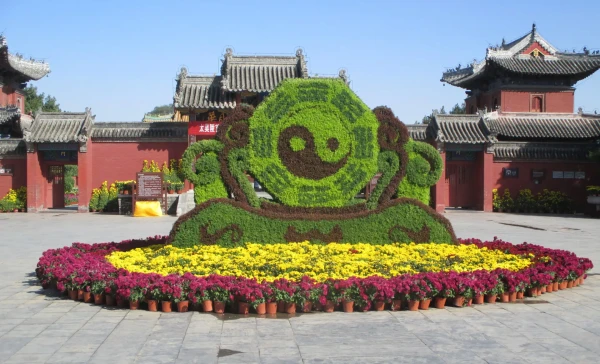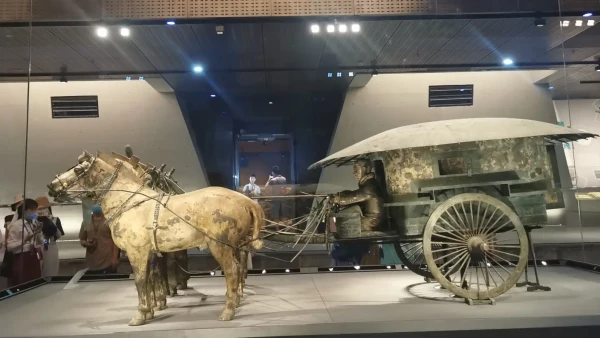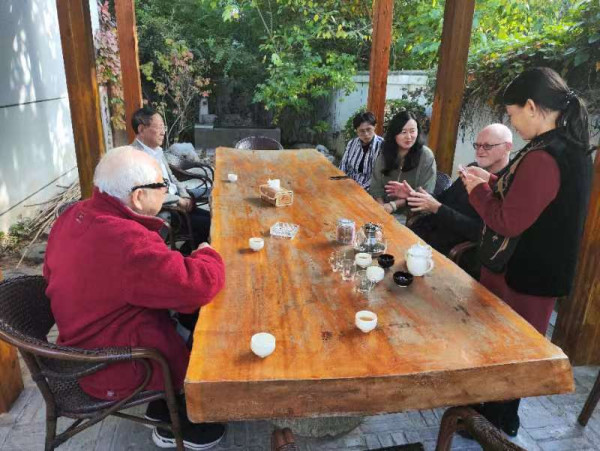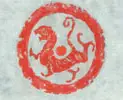Grand View Gardens
Grand View Gardens in Beijing was initially built in the early 1980s as a film site for the filming of the Dream of the Red Mansions (also called The Story of the Stone, or Hongloumeng), it is one of the great classic pieces of Chinese literature. Written in the 18th Century by Cao Xueqin the story follows the romances of its key characters during the Qing dynasty. It remains one of the sources of life during that period, and is imbued with Confucian and Taoist philosophies along with details of garden design and cuisine. The series when televised in 1986 was extremely popular, and a new version was filmed in 50 episodes in 2010. It is much studied by scholars known as "Redologists", and the site in Beijing was very carefully constructed in the light of scholarly advice. Today, during the summer, it is the venue for concerts and performances, is often in use as a film site, and is a popular attraction for both residents and tourists.

Grandview Gardens (Daguanyuan)
Taohao Fuxi Mausoleum
Fuxi and Nuwa are among the very earliest of Chinese rulers and are semi-mythical, and are the basis of creation myths. Fuxi is allegedly buried at the site, although the current temples in the complex date initially from the 15th Century. Excavations in the vicinity have revealed sites believed to date from about 2000 BCE. Today it is of cultural significance, and a site of ancestor worship and birthing rites, and of Buddhist belief systems. During the Golden Weeks the site can host 100,000 pilgrims and visitors. There are many stories associated with the site, which is connected to the I Ching, and among other things using the famous yin-yang symbol, fortune tellers will predict your future.

Entrance to Fuxi Mausoleum
The Terracotta Warriors Museum

Terracotta Warriors Museum
This site will need little introduction. More formally the Emperor Qin Shi Huang Mausoleum is the tomb of the first Emperor of China and the founder of the Qin dynasty, but the dynasty scarcely lasted three years after his death in 210 BCE. Pit 1, which contains the serried ranks of warriors is but the tip of what remains to be discovered, which includes the actual tomb which was described by the father of Chinese history, Sima Qian, as including a river of mercury. Our work relates to visitor expectations and evaluations of the site, and also to the use of smart media.
The Cao Xueqin Centre
In 2025-2026 the members of the research unit are working with the Cao Xueqin Centre in the Western Heights on a book introducing visitors to the life, times and impacts of the Cao Xueqin. Cao is generally regarded as one of the more famous, if not the most famous of all Chinese writers.
His classic novel Honglou Meng (Dream of the Red Mansions) has given rise to the scholastic study of Redology as commentators and interpreters of his novel continue their studies of his novel. The novel is a romance, a study of decaying fortunes of the Jia aristocratic family that are said to reflect Cao's personal life during the days of the Qing dynasty.
Tea is of course, a key feature of Chinese life, and the photograph below was taken at the centre.

Mr Hu, Director of the Centre, the composer Wang Liping who wrote the music for the 1980s television series on the left. On the right hand side are Dr Chen Ge, Associate Professor Zhang Xiaoyu, Chris Ryan, and side onto the camera, Wei Lingzhi, Secretary-General of the Society.
